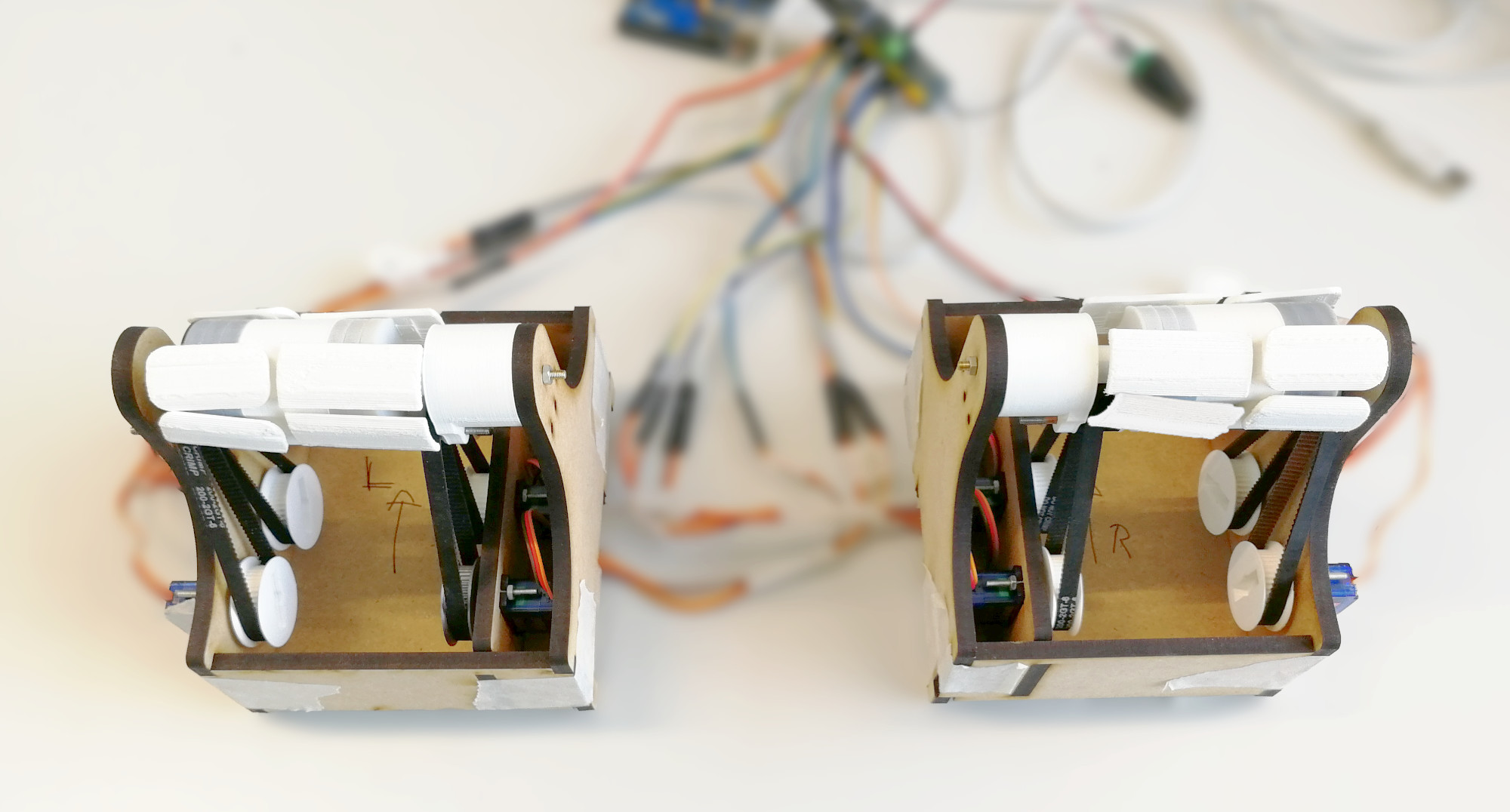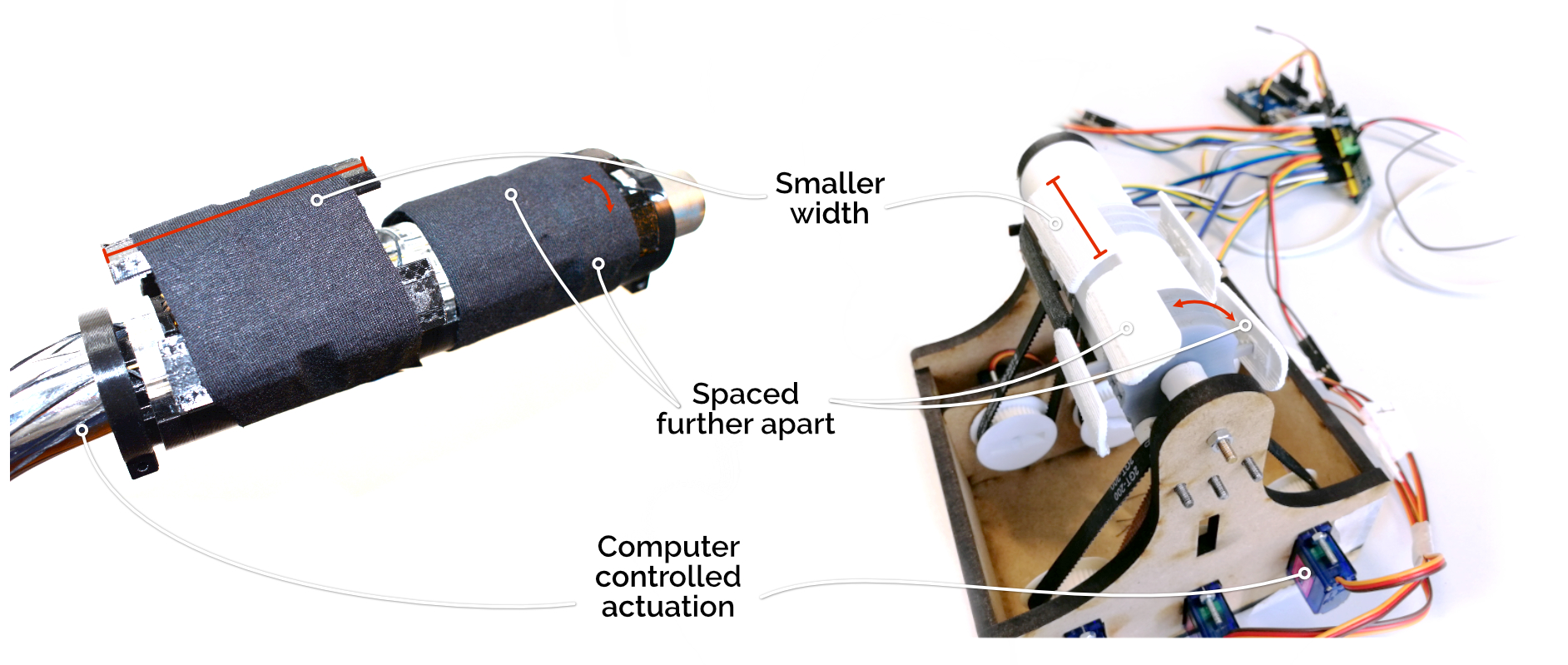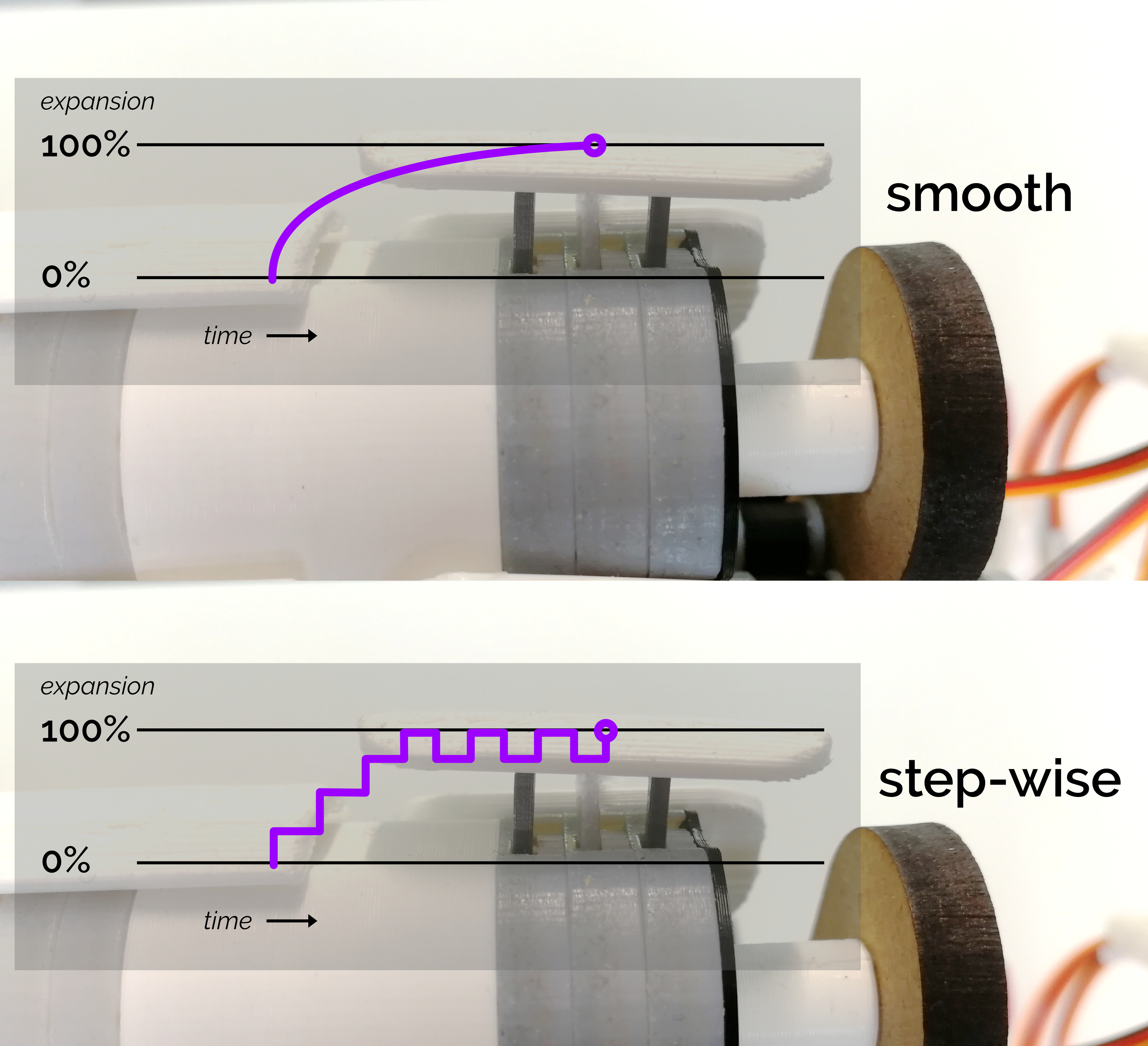

2022 | master grad project | Grade: 9/10
InForm is as set of motorcycle grips that tackles the combination of vulnerability and poor visibility of motorcyclists. The grips provide blind spot and collision warnings through haptic shape change. This helps the rider navigate through traffic safer.
In contrast to contemporary blind spot warning lights or beeps, shape change doesn’t require visual attention, but rather adds a layer of information on top of the rider’s vision. The environment can be perceived to a greater extent by both the rider's eyes and haptic feedback for vehicles outside the rider's periphery.
Results of multiple tests show a positive influence on the rider’s environmental awareness and reaction time to hazardous events, thus creating a safer ride without taking away control. What's more, participants indicated to feel more reassured with the feedback, as they were more confident in what they perceived with their eyes. The result of this was visible in terms of less (chaotic) shoulder and mirror checks. Nevertheless, riders were still fully aware, if not more, about their surroundings.
Being a motorcyclist myself, I have personally experienced the consequences of poor visibility. Explorative user studies and statistics confirmed this issue, which initiated a design process to improve safety related to visibility without jeopardizing the hobby-aspect of motorcycling, i.e. no automation. The vulnerability combined with poor visibility of motorcyclists is unlikely to be solved by designing for other road users, as distractions such as phones cause the issue. Hence, the solution was sought by providing the motorcyclist with additional information regarding potential hazards, without risking information overload or distraction.
The grips consist of a center ring with three panels, front, center and rear. Blind spot and collision warnings are provided by moving these panels. Surroundings are scanned using sensors such as cameras or radar technology.
Collisions are communicated through tapping panels, mimicking vibration. Based on the speed difference between the user and approaching vehicle, the activation range of the collision feedback is extended. Higher speed difference requires more distance to react on. Vehicles in the blind spot trigger a smooth transition in shape change, that is essentially pointing to the vehicle: left vs. right and rear vs. besides. A passing vehicle results is a smooth wave that can be felt as long as the vehicle is in the blind spot. The front panels of both grips are used when the user is quickly approaching an obstacle, e.g. a traffic jam, to warn them to react. Similar feedback is triggered for both rear panels.
Multiple prototypes were made and tested with increasing fidelity. The first set of prototypes includes concept sketches and wooden mock-ups to converge on the right problem, ultimately visibility. To mitigate poor visibility hazards, the motorcyclist was chosen as user, rather than other drivers. This resulted in attempting to improve the situational awareness of riders. Benchmarking of similar products showed a heavy use of abstract visual feedback. The goal became to design an informing interface without dividing attention over the road and the feedback. That's where haptics was introduced. A next set of prototypes tested a variety of modalities including force, motion and shape changing feedback, of which the latter was considered the clearest and least intrusive. In addition, shape changing grips provide continuous feedback, which is essential for this application. Following iterations focused on optimizing the amount of information and mapping of the environment to shape change. Here, the distinction between informing and warning intensity surfaced, which resulted in a smooth "wave" for the blind spot and high attention-drawing "tapping" for collision hazards. The latest prototypes were combinations of physical experience prototypes and VR, to approach a real context.










.jpg)
.jpg)
⛶